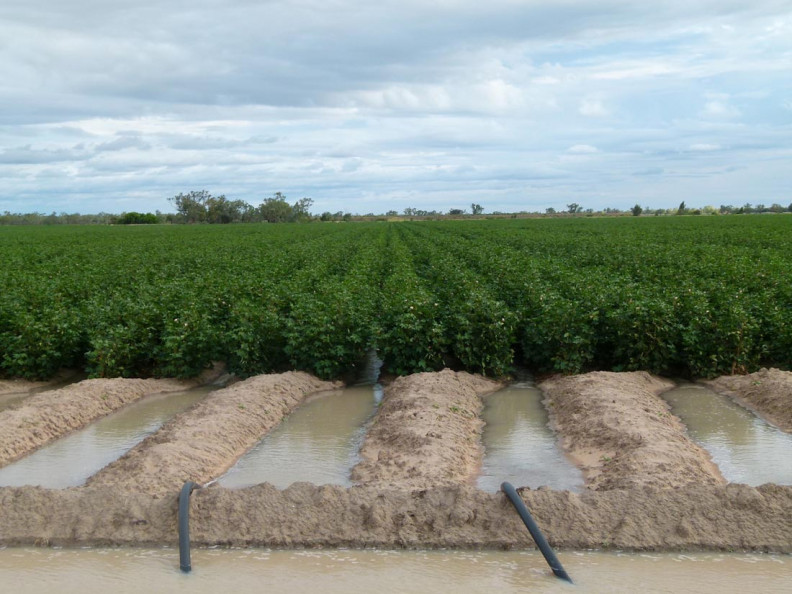Following a recent trip to Queensland, Australia, Dr. Kater Hake, vice president for agricultural and environmental research at Cotton Incorporated, shared some of his findings from meetings and farm visits with members of the Australian cotton industry.
Amidst a three-year drought, Australian cotton production for the season ending March 2020 is estimated to range from 0.7 million to 1.3 million bales. While the quantity is significantly down, quality seems to fall within the expected range. Since nearly all cotton produced is exported – primarily to Asian countries – quality plays a significant role, with a tight range in micronaire.
Hake revealed four important takeaways from his visit:
- Technology adaptation
- Value addition to cotton byproducts
- Water use efficiency
- Resistance management of Bt
With increasing labor costs, Australian cotton farmers are effectively utilizing robotics. Hake pointed out that he had seen herbicide spraying robots containing weather signaling systems. The sprayer senses wind directions and temperature and switches on and off, enabling good environmental stewardship. As the Australian crop is irrigated, government restrictions in water usage limits planting to water availability during the growing season.
Since Australia has no crusher for oil, all cottonseed goes to feeding cattle. Interestingly, 25% of the cattle diet is cottonseed, which enriches the quality of meat, catering to high quality exports.
Resistance management of Bt traits has helped the industry to control bollworms, similar to some parts of the U.S. Cotton Belt. Agricultural practices such as shallow tillage to disrupt the pupae is also helping the Australian farmers, stated Hake.
With the limited amount of available land in Australia, the United States is still the largest and most reliable supplier of cotton in the export market. However, noted Hake, cotton farming is expanding to the north and south of traditional production areas in New South Wales and Queensland.
In closing, Hake stated, “The production systems between the United States and Australia are similar, and the two countries can learn and help each other to move the industry forward.”
Dr. Seshadri Ramkumar is a professor in the Department of Environmental Toxicology and The Institute of Environmental and Human Health at Texas Tech University, and a frequent contributor to Cotton Grower.
Πηγή: Cotton Grower

